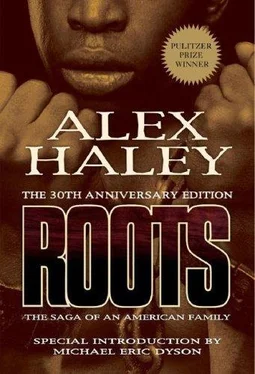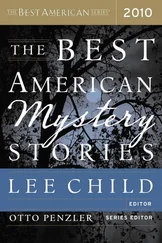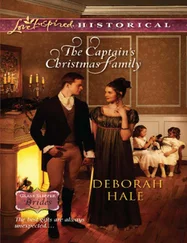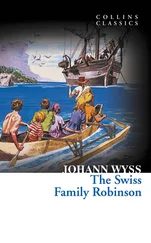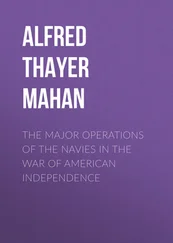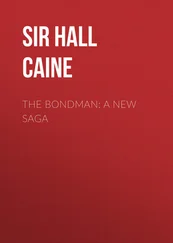Renting a car, speeding to Annapolis, I went to the Maryland Hall of Records and asked archivist Mrs. Phebe Jacobsen for copies of any local newspaper published around the first week of October 1767. She soon produced a microfilm roll of the Maryland Gazette . At the projection machine, I was halfway through the October 1 issue when I saw the advertisement in the antique typeface: “JUST IMPORTED, In the ship Lord Ligonier , Capt. Davies, from the River Gambia, in Africa, and to be sold by the subscribers, in Annapolis, for cash, or good bills of exchange on Wednesday the 7th of October next, A Cargo of CHOICE HEALTHY SLAVES. The said ship will take tobacco to London on liberty at 6s. Sterling per ton.” The advertisement was signed by John Ridout and Daniel of St. Thos. Jenifer.
On September 29, 1967, I felt I should be nowhere else in the world except standing on a pier at Annapolis—and I was; it was two hundred years to the day after the Lord Ligonier had landed. Staring out to seaward across those waters over which my great-great-great-great-grandfather had been brought, again I found myself weeping.
The 1766-67 document compiled at James Fort in the Gambia River had included that the Lord Ligonier had sailed with 140 slaves in her hold. How many of them had lived through the voyage? Now on a second mission in the Maryland Hall of Records, I searched to find a record of the ship’s cargo listed upon her arrival in Annapolis—and found it, the following inventory, in old-fashioned script: 3,265 “elephants’ teeth,” as ivory tusks were called; 3,700 pounds of beeswax; 800 pounds of raw cotton; 32 ounces of Gambian gold; and 98 “Negroes.” Her loss of 42 Africans en route, or around one third, was average for slaving voyages.
I realized by this time that Grandma, Aunt Liz, Aunt Plus, and Cousin Georgia also had been griots in their own ways. My notebooks contained their centuries-old story that our African had been sold to “Massa John Waller,” who had given him the name “Toby.” During his fourth escape effort, when cornered he had wounded with a rock one of the pair of professional slave-catchers who caught him, and they had cut his foot off. “Massa John’s brother, Dr. William Waller,” had saved the slave’s life, then indignant at the maiming, had bought him from his brother. I dared to hope there might actually exist some kind of an actual documenting record.
I went to Richmond, Virginia. I pored through microfilmed legal deeds filed within Spotsylvania County, Virginia, after September 1767, when the Lord Ligonier had landed. In time, I found a lengthy deed dated September 5, 1768, in which John Waller and his wife Ann transferred to William Waller land and goods, including 240 acres of farmland ... and then on the second page, “and also one Negro man slave named Toby.”
My God!
In the twelve years since my visit to the Rosetta Stone, I have traveled half a million miles, I suppose, searching, sifting, checking, crosschecking, finding out more and more about the people whose respective oral histories had proved not only to be correct, but even to connect on both sides of the ocean. Finally I managed to tear away from yet more researching in order to push myself into actually writing this book. To develop Kunta Kinte’s boyhood and youth took me a long time, and having come to know him well, I anguished upon his capture. When I began trying to write of his, or all of those Gambians’ slave-ship crossing, finally I flew to Africa and canvassed among shipping lines to obtain passage on the first possible freighter sailing from any black African port directly to the United States. It turned out to be the Farrell Lines’ African Star . When we put to sea, I explained what I hoped to do that might help me write of my ancestor’s crossing. After each late evening’s dinner, I climbed down successive metal ladders into her deep, dark, cold cargo hold. Stripping to my underwear, I lay on my back on a wide rough bare dunnage plank and forced myself to stay there through all ten nights of the crossing, trying to imagine what did he see, hear, feel, smell, taste—and above all, in knowing Kunta, what things did he think? My crossing of course was ludicrously luxurious by any comparison to the ghastly ordeal endured by Kunta Kinte, his companions, and all those other millions who lay chained and shackled in terror and their own filth for an average of eighty to ninety days, at the end of which awaited new physical and psychic horrors. But anyway, finally I wrote of the ocean crossing—from the perspective of the human cargo.
Finally I’ve woven our whole seven generations into this book that is in your hands. In the years of the writing, I have also spoken before many audiences of how Roots came to be, naturally now and then someone asks, “How much of Roots is fact and how much is fiction?” To the best of my knowledge and of my effort, every lineage statement within Roots is from either my African or American families’ carefully preserved oral history, much of which I have been able conventionally to corroborate with documents. Those documents, along with the myriad textural details of what were contemporary indigenous lifestyles, cultural history, and such that give Roots flesh have come from years of intensive research in fifty-odd libraries, archives, and other repositories on three continents.
Since I wasn’t yet around when most of the story occurred, by far most of the dialogue and most of the incidents are of necessity a novelized amalgam of what I know took place together with what my researching led me to plausibly feel took place.
I think now that not only are Grandma, Cousin Georgia, and those other ladies “up there watchin’,” but so are all of the others: Kunta and Bell; Kizzy; Chicken George and Matilda; Tom and Irene, Grandpa Will Palmer; Bertha; Mama—and now, as well, the most recent one to join them, Dad . . . .
He was eighty-three. When his children—George, Julius, Lois, and I—had discussed the funeral arrangements, some one of us expressed that Dad had lived both a full life and a rich one in the way that he interpreted richness. Moreover, he had gone quickly without suffering, and knowing Dad as well as we all did, we agreed that he would not have wanted us going about crying. And we agreed that we would not.
I found myself so full of the memories that when the mortician said “the deceased,” it startled me that he meant our dad, around whom things rarely got dull. Shortly before the first service that was held for him in a Washington, D.C., chapel thick with family friends, my brother George told the Reverend Boyd, who was in charge, that at an appropriate point, we sons would like to share some memories of Dad with the friends there.
So after brief conventional services, a favorite song of Dad’s was sung, then George got up and stood near the open casket. He said he vividly recalled that wherever Dad had taught, our home was always shared with at least one youth whose rural farmer father Dad had talked into letting his son attend college, the “no money” protest being solved by Dad’s saying, “He’ll live with us.” As a result, George estimated that about the South were around eighteen county agricultural agents, high school principals, and teachers who proudly call themselves “’Fessor Haley’s boys.”
George said that among earlier memory was once when we lived in Alabama and at breakfast Dad said, “You boys come on, there’s a great man I want you to meet.” And just like that Dad drove us three boys the several hours to Tuskeegee, Alabama, where we visited the mysterious laboratory of the small, dark genius scientist, Dr. George Washington Carver, who talked to us about the need to study hard and gave us each a small flower. George said that in Dad’s later years, he had been irked that we did not hold annual large family reunions as he would have liked, and George asked the audience now to join us in feeling that really we were holding a reunion both for and with our dad.
Читать дальше
